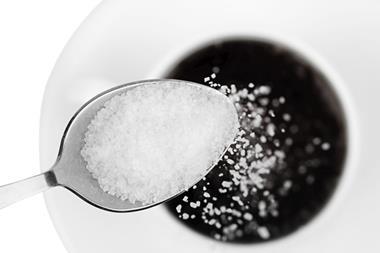Sugar is in the spotlight. Action on Sugar’s confrontational stance on processed foods has highlighted the role of sugar in the diet and laid down the gauntlet to the food and drink industry to reduce its use for the health and benefit of the populace.
Action on Sugar has undoubtedly been buoyed by the campaign against sodium over the last 10 years. The introduction of voluntary targets has resulted in a 10% reduction in dietary salt.
But can the success of the salt campaign be replicated?
With salt, ‘stealth’ was key: salt was incrementally removed from products over time. Less salt was added; technological options were developed; salt alternatives found; and culinary skills were used to enhance flavour through reformulation.
This approach had a significant impact on consumers’ sensory demands. Taste preferences changed as salt was slowly removed, creating a real win-win and a virtuous circle that will lead to long-term health benefits.
Sugar differs from salt in its multi-functionality: it provides bulk, structure, texture and a reactive pathway for savoury flavours as well as sweetness. Focusing on sweetness alone, a stealth approach may be successful. However, it could be argued that the prevalence of sweetness in the modern diet comes not from sugar but the widespread use of intense sweeteners.
A successful long-term strategy to reduce sugar in the diet will therefore need to go hand in hand with an overall reduction in the use of sweeteners.
This may seem counterintuitive, as the use of intense sweeteners is itself a sugar reduction strategy, but with some of the new intense sweeteners being 20,000 times sweeter than sugar, it is easy to see how this may drive a taste for sweetness. A change in consumer preference is therefore essential to success.
One of the virtues of the salt campaign for the consumer was that other macro-trends, such as ‘clean label’ and ‘natural,’ were not compromised. The presence of potassium and magnesium salts did not prove controversial since they are recognised as essential minerals.
But that may not be true for sugar. Sugar is itself considered clean and natural, and the alternatives may not meet the store-cupboard ingredient test.
Maltitol and sorbitol – the obvious choices as bulking agents – are not instantly recognised, and the use of a laxative warning for excessive consumption is not likely to be well received. Likewise, aspartame, the most well-known of the intense sweeteners, has had much bad press, albeit largely discredited, and is on the additive no-no list for many.
Sugar reducers certainly have a challenge, but their task is not impossible. They will need not simply to focus on reducing sugar in the diet, but must also start a dialogue about increasing fibre and protein.
There is little doubt that a balanced diet comprising carbohydrates, protein, fibre and fat is essential to wellbeing. Promoting that fact could ultimately drive a holistic diet reformulation strategy.
Steve Osborn is business innovation manager at Leatherhead Food Research



















No comments yet